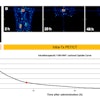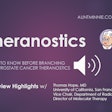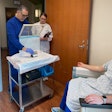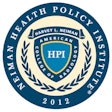Society of Nuclear Medicine, Reston, VA, 2000, $18 for SNM members; $45 for non-members
This is an interesting and unique nuclear medicine textbook. As the title implies, the specific audience for this textbook is clinicians who order nuclear medicine studies. For this reason, the information presented is very practical and succinct, and simple, non-technical language is used whenever possible.
The emphasis on brevity, clinical questions, and patient information is the major strength of this text. For the most part, the 29 chapters of this 400-page book are organized in a standard format that will help readers quickly find the information that they need. The standard format for most chapters includes:
- Type of study
- Background information
- Radiopharmaceuticals
- How the study is performed
- Patient preparation
- Understanding the report
- Potential problems
- Clinical questions
- Worth mentioning
- Patient information
- References
The chapters are organized according to organ systems (gastrointestinal system) or specific clinical problems (AIDS, prostate cancer). Despite the fact that this is a basic introductory text, the coverage of topics is quite comprehensive. For example, there are chapters on PET, intracavitary therapy, bone pain palliation, and polycythemia vera.
There also is a basic chapter on radiation, radiopharmaceuticals, and imaging devices, as well as a chapter on the comparative costs of diagnostic tests. The index is comprehensive and well organized. Sample images are presented to give clinicians some idea of what to look for.
Although this guide is primarily written for clinicians, it has value for radiologists, nuclear medicine staff, and residents. It would be a useful text for on-call residents and trainees because the practical information is easy to find. The text would be helpful in order to update procedure manuals for scheduling clerks or patient manuals. Every nuclear medicine department should have A Clinician’s Guide to Nuclear Medicine so that they can share it with referring clinicians.
By Dr. Henry D. RoyalAuntMinnie.com contributing writer
Dr. Royal is the associate director of nuclear medicine at the Mallinckrodt Institute of Radiology and a professor of radiology at the Washington University School of Medicine, both in St. Louis. He serves on the board of directors of the Society of Nuclear Medicine, but was not involved in development of this publication.
If you are interested in reviewing a book, let us know at [email protected].
The opinions expressed in this review are those of the author, and do not necessarily reflect the views of AuntMinnie.com.
Copyright © 2001 AuntMinnie.com



















